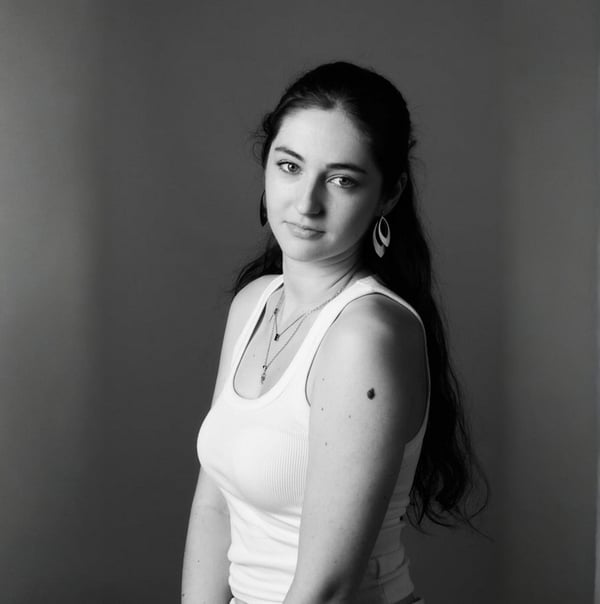How to Draw a Dress: Easy Fashion Sketch Tutorial
Table of Contents
- Why Learn to Draw Dresses?
- Step 1: Start with the Fashion Figure (Croquis)
- Step 2: Sketch the Dress Silhouette
- Step 3: Add Key Design Elements
- Step 4: Show Fabric Flow and Movement
- Step 5: Refine, Shade, and Add Texture
- Step 6: Add Color
- Common Dress Silhouettes to Practice
- Tips to Improve Your Dress Drawings
- Why Fashion Sketches Still Matter
- How AI Tools Like Modelia Can Support Your Dress Sketches
- Final Thoughts
Drawing has always been at the heart of design. Before fabric is cut, before patterns are drafted, and long before a garment reaches the runway or a store, it usually begins with a sketch. As dresses are the main representation of fashion, we are going to start on how to draw a dress.
Knowing how to draw a dress gives you the foundation to express ideas clearly, explore different silhouettes, and bring your creativity into the world of clothing sketching. Dresses represent freedom in design, they can be simple, elegant, extravagant or experimental. Learning how to draw a dress allows you to express creative ideas clearly, explore new silhouettes and build a foundation for professional design work.
The good news is that you do not need to be a master artist to start. Fashion sketches are not about hyper-realism, they are about communicating ideas quickly and beautifully. With practice and the right steps, you can learn to sketch dresses that show proportion, detail, fabric movement and personality.
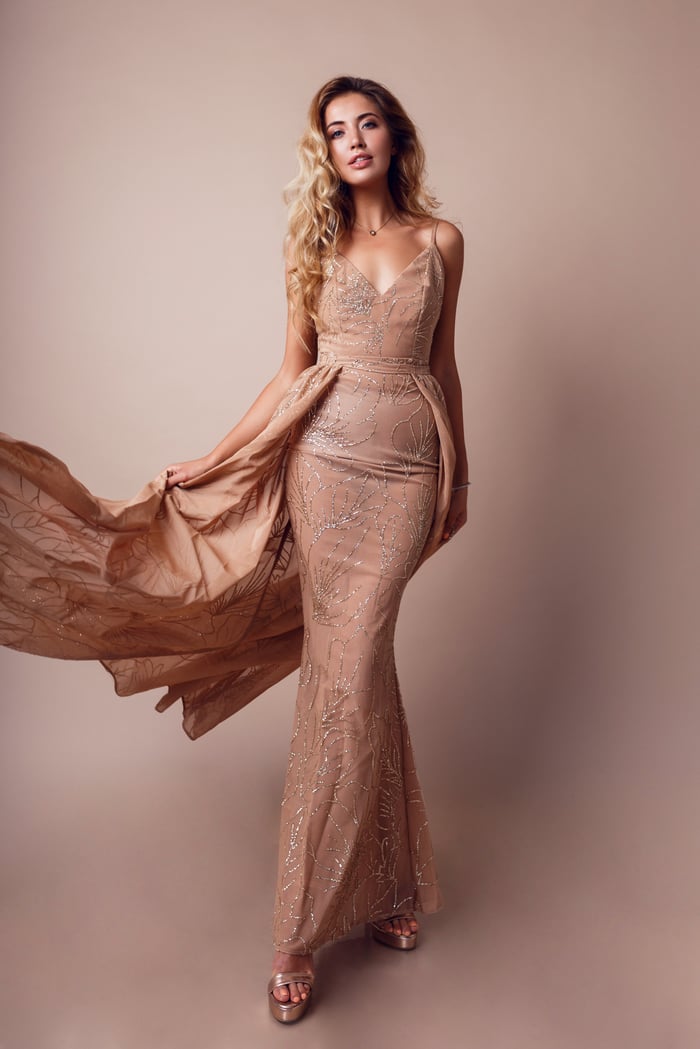
Why Learn to Draw Dresses?
Understanding how to draw a dress is essential if you are exploring fashion design in any capacity. Here is why:
For beginners and students, it builds confidence and helps you visualize your ideas.
For hobbyists, it’s a fun and creative outlet to experiment with style.
For designers, dress sketches are the bridge between imagination and production. They are the first step to turning an idea into a garment that can be cut, sewn and worn.
For professionals, sketches are a key communication tool for presentations, moodboards and collections.
Most importantly, sketching helps you develop your own visual language. Every designer eventually finds a sketching style that feels unique, and dresses are a perfect garment to practice with because of their variety in shape, volume, and fabric movement.
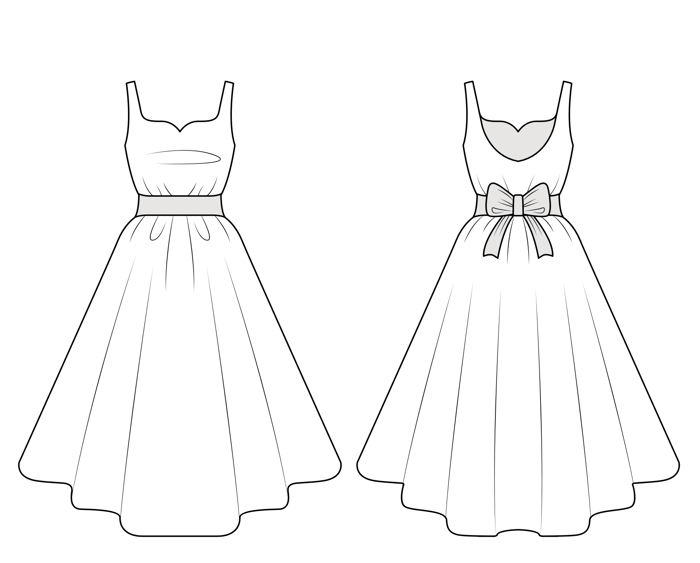
Step 1: Start with the Fashion Figure (Croquis)
The foundation of every fashion sketch is the croquis, which is the outline of the body used as a base. Unlike standard human proportions, a croquis is usually elongated (often around 9 heads tall) to emphasize elegance and showcase the garment more than the body itself.
Begin with a light outline of the head, torso, hips, and legs.
Keep proportions consistent and fluid rather than rigid.
Focus on posture: does your figure stand straight, shift weight to one side, or have movement in the pose? The pose will set the tone for how the dress looks.
Think of the croquis as your mannequin. It does not need facial details or realistic anatomy, just a guide to hold your dress design.
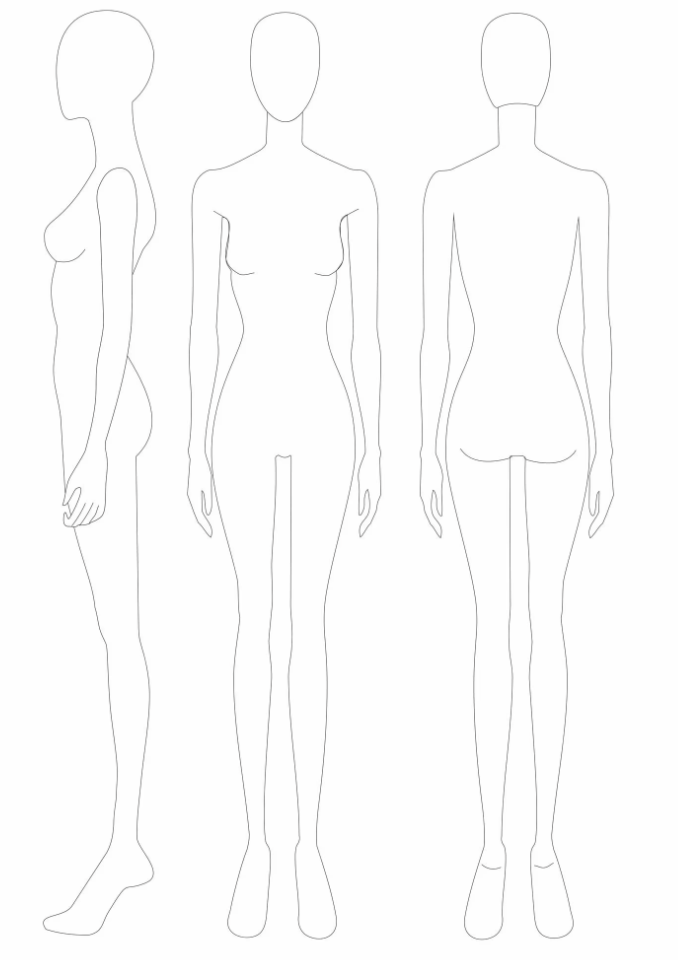
Step 2: Sketch the Dress Silhouette
Once your croquis is ready, it’s time to design the silhouette of the dress. This step is like choosing the architecture of your garment. Ask yourself:
Do I want it long or short?
Tight or flowing?
Minimal or layered?
At this stage, it is helpful to use basic geometric shapes to block out proportions. For example:
Triangles can form A-line dresses.
Rectangles suggest straight-cut shift dresses.
Ovals and circles can create flared skirts or ball gowns.
Silhouette is critical because it defines the overall character of the dress. Even before adding details, someone should be able to recognize if it is an evening gown, a sundress, or a cocktail dress just from its shape.
Step 3: Add Key Design Elements
Once the silhouette feels balanced, start layering in the specific features:
Necklines: V-neck, sweetheart, off-shoulder, halter.
Sleeves: Puff, cap sleeves, long fitted, or sleeveless.
Waistline: Natural, empire, dropped, or belted.
Hemline: Mini, midi, maxi, asymmetrical, or mermaid.
This is where your personal creativity comes to life. Do you want ruffles, pleats, or cut-outs? Maybe embroidery, sequins, or minimalist lines? Keep these details light until you are sure of their placement.
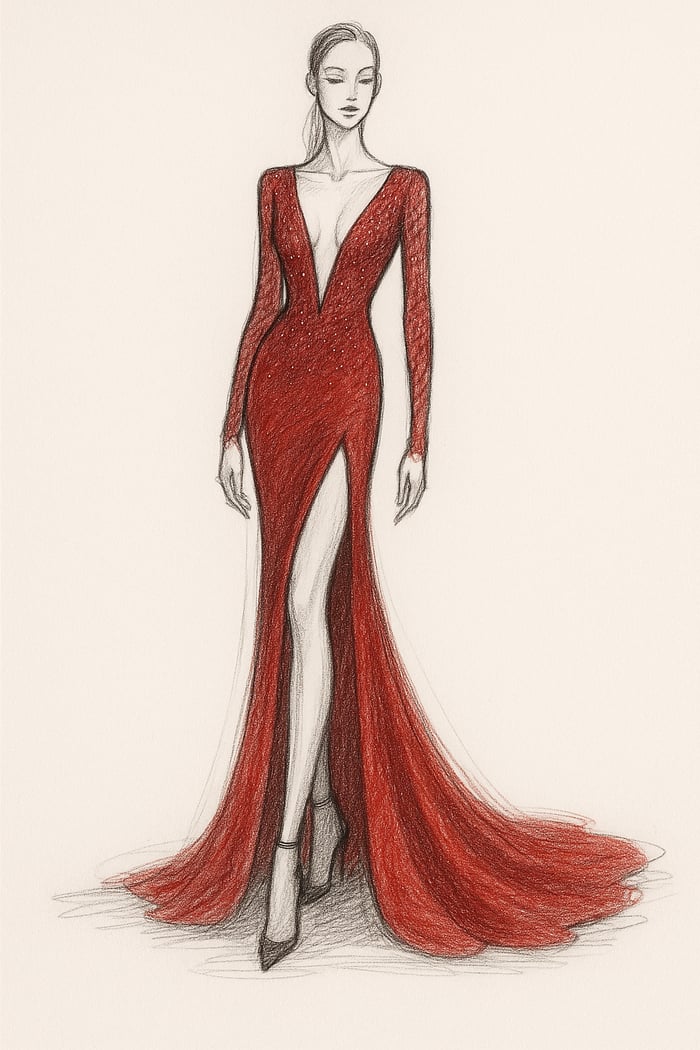
Step 4: Show Fabric Flow and Movement
One of the most challenging and rewarding parts of fashion drawing is capturing how fabric behaves.
Think about the dress material you are sketching:
Silk or satin flows in soft, smooth curves.
Cotton falls more stiffly, holding shape with subtle folds.
Tulle or organza creates structured volume with airy transparency.
Denim or leather looks heavy, with sharper edges and limited movement.
Use curved lines to suggest flow, and exaggerate movement if needed. For example, when drawing a gown, let the hemline extend outward as if it’s swaying with the model’s step. This makes the sketch dynamic and alive rather than static.
Step 5: Refine, Shade, and Add Texture
After the structure looks solid, refine your sketch with confident, darker lines. This is the time to add:
Stitch lines, seams, and darts.
Accessories like belts, bows, or jewelry.
Shading for depth, especially under folds, pleats, or overlapping fabrics.
Patterns such as stripes, polka dots, florals, or abstract prints.
Shading is particularly important because it gives your dress dimension. Even a simple pencil sketch can look professional with well-placed shadows and highlights.
Step 6: Add Color
Color transforms your drawing from a sketch into a real design concept.
Use markers or colored pencils for a traditional look.
Watercolors can add softness and blend well with flowing fabrics.
Digital tools (like Procreate or Photoshop) provide precision and allow easy adjustments.
Color not only communicates mood but also shows versatility. Try experimenting with multiple colorways of the same dress to see how it changes character, from a classic black evening dress to a playful pastel summer version.

Common Dress Silhouettes to Practice
To expand your skills, practice sketching different silhouettes. Here is a quick guide:
Silhouette | Description | Best For |
|---|---|---|
A-Line | Narrow at the top, flares gradually | Everyday wear, universally flattering |
Sheath | Straight and fitted, follows body lines | Minimalist, office or evening wear |
Empire Waist | High waist under bust, flows down | Romantic, maternity, bohemian styles |
Ball Gown | Fitted bodice, full voluminous skirt | Weddings, red carpet, formal wear |
Mermaid | Fitted to the knees, flares at bottom | Glamorous evening gowns |
Shift | Straight cut, no defined waist | Casual, retro-inspired looks |
Wrap Dress | Overlapping panels tied at waist | Versatile, flattering for many body types |
Practicing with each silhouette will make your sketching skills more versatile.
Tips to Improve Your Dress Drawings
Sketch daily: Even 10 minutes of practice builds confidence.
Use references: Study runway looks, magazines, or photos.
Experiment: Try different tools—pencil, ink, watercolor, or digital.
Study real fabrics: Touch garments to understand how they fold.
Keep a portfolio: Save your sketches to track progress and build ideas.
Why Fashion Sketches Still Matter
In the age of 3D design software and AI-powered tools, you might wonder if sketching is still relevant. The answer is yes. Fashion sketches are still one of the fastest, most intuitive ways to get an idea out of your head and onto paper. They carry a personal touch that no software can fully replicate. And while technology can enhance your workflow, sketches remain the universal visual language of design.
How AI Tools Like Modelia Can Support Your Dress Sketches
If you want to combine traditional sketching with modern technology, platforms like Modelia can help. With AI model generators, you can create digital models wearing different outfits instantly. This means you can test how your sketched dress might look on various body types, in different colors, or styled with other garments, without needing a photoshoot.
For designers, this bridges the gap between imagination and visualization. For students or beginners, it makes experimenting easier, faster and more fun. Sketch your dress by hand, then use AI to expand, test and refine your ideas.
Final Thoughts
Learning how to draw a dress is one of the most rewarding skills in fashion. It is a balance of technical understanding, creative freedom, and practice. Start with the basics: croquis, silhouette, details, and fabric movement. Then build on that with shading, color, and personal style. By following a structured dress sketch tutorial, practicing silhouettes, and applying the right fashion drawing tips, you can develop a personal style in your clothing sketching.
The more you practice, the more natural it will feel, and the faster you will be able to capture your ideas. Whether you dream of launching a clothing brand, working in fashion design, or simply sketching for fun, dress drawings give you the tools to express creativity in one of the most powerful forms, visual storytelling.
So pick up a pencil (or open your digital sketching app), and start sketching. The next great fashion design might begin with your first dress drawing.
How would you rate this article:
Related Articles
- 7 Fashion Brand Marketing Strategies to Succeed in a Competitive Market
- Digital Fashion in the Metaverse: How Virtual Clothing is Shaping the Future of Online Style
- How to Transform Fashion Sketches Into Stunning Photos
- How to Create a Clothing Brand: Step-by-Step Guide
- Christmas Outfit Ideas for a Stylish Holiday Season
- Old School Fashion Trends That Are Back in Style
- The Rise of AI Beauty: Personalized Skincare in 2025
- Top 5 Image Quality Enhancer to Sharpen & Improve Photos
- AI Jewelry Generator: Designing Stunning Jewelry with AI Tools
- Best 6 Fashn.ai Competitors & Alternatives in 2025


